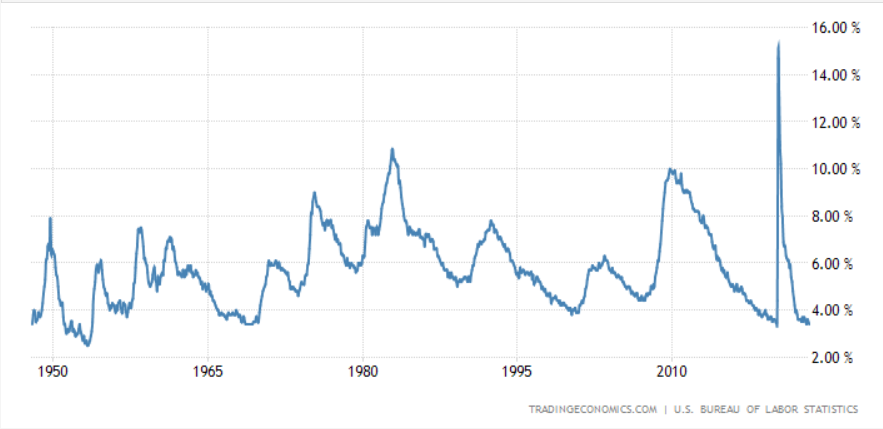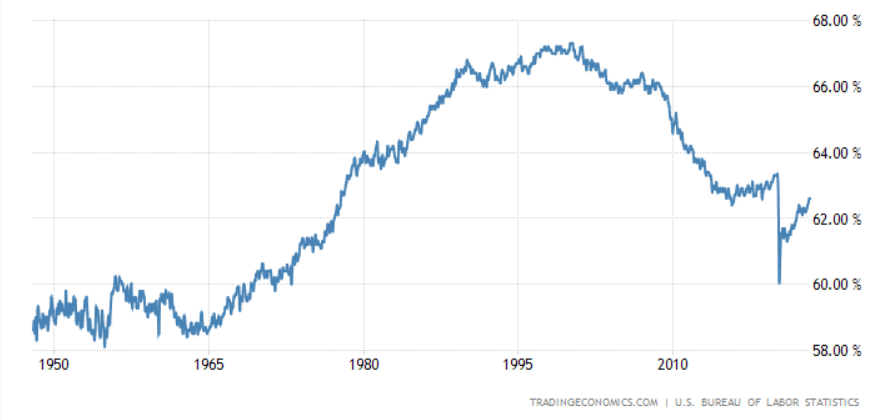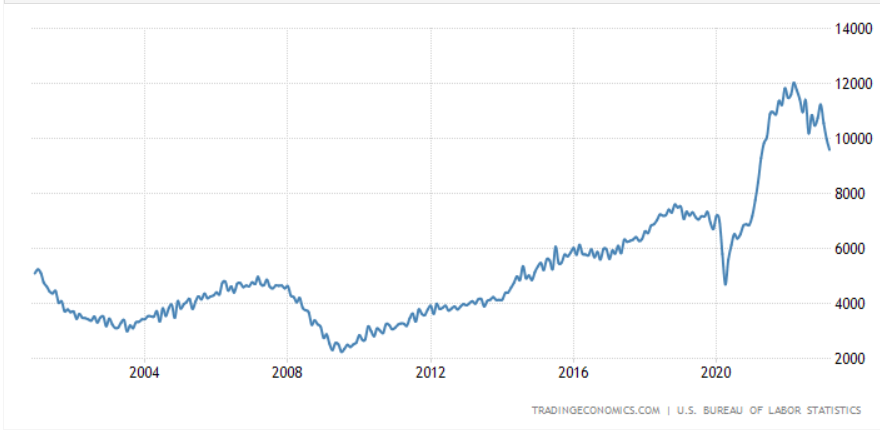US unemployment lowest since 1969.
But 3,55,000 were laid off in tech last year!
Economic data can be confusing. Unemployment rate in U.S. is at its lowest level since 1969, but tech layoffs are at historical high after the 2001 dot-com bust! If companies are laying off then how can we have declining unemployment rate? Is it bullish or bearish?
US Unemployment Rate

The official unemployment rate is a ratio of the number of persons who are jobless to the number of people who are in the labour force, which includes everyone who has or seeks a job. The unemployment rate can fluctuate for a variety of causes. Early in the recovery, even if hiring remained poor, the unemployment rate began to fall because workers dissatisfied by a lack of jobs ceased seeking for work and were no longer counted as part of the labour force.
Unemployment rate does not provide a complete picture, because it fails to include people who are not fully part of the labor force or want full-time work but can only find part-time jobs.
It also excludes persons who are not looking for jobs, regardless of whether they want one. Because the official unemployment rate excludes persons who are not looking for work, the labour participation rate has a direct impact on it.
For example, in a 100-person economy with only one working person, the unemployment rate may be 0%, provided none of the other 99 are looking for work.
What is labour force participation rate?
The labour force participation rate is calculated by the Bureau of Labour Statistics as the percentage of the civilian noninstitutional population that is actively working or seeking for work. It only includes persons aged 16 and up in the labour pool.
It is impractical to expect 100% labour force participation. The majority of 16-year-olds remain in school, and many go on to college. Furthermore, this metric covers elderly Americans who have reached retirement age.
Labour Force Participation Rate

Current situation
Labor-force participation began to decline in the 1990s. It declined from 63.3% in February 2020 to 60.1% in April 2020 as the epidemic began. This represents a drop of more than 8 million people.
Despite modest improvement, labour force participation remains around 62.5%, significantly below pre-pandemic highs. It seems logical that low unemployment rates are attributable in part to a smaller labour force and are not indicative of a thriving economy.
Job Openings
As seen above, unemployment rate is a relative data, a better indicator is the US Job Openings which is the actual number of job openings – unrelated with anything else.
US Job Openings Data

It shows a post-covid spike which was expected. But since March 2022, it has been on decline, again a contradiction to the declining unemployment rate. This also confirms that the unemployment rate is falling mainly due to fall in labor force participation.
Conclusion
There is not much to cheer about. People are losing jobs.
There may be a mild bull run – see previous post https://trikaalcapital.com/the-bull-case-why-the-stocks-may-rise-further/
But inflation and recession will be back. Read more – https://trikaalcapital.com/everything-indicates-a-global-recession-but-stocks-are-rallying-why/, and https://trikaalcapital.com/recession-is-certain-bounce-back-is-temporary/